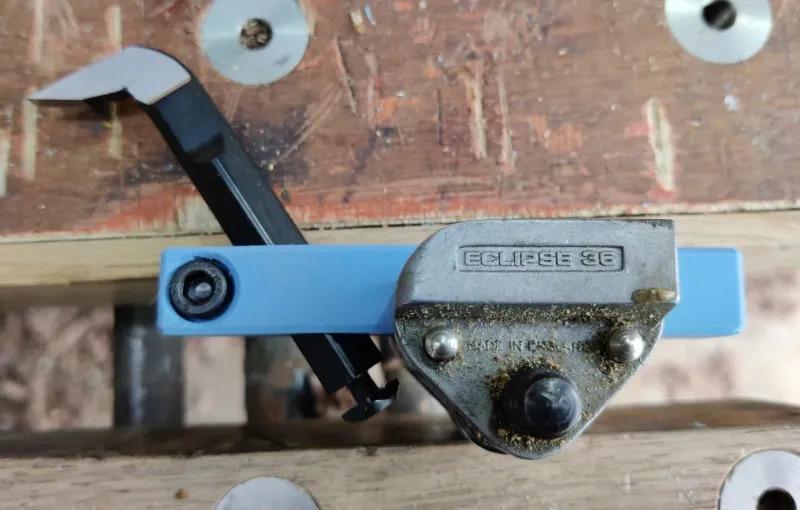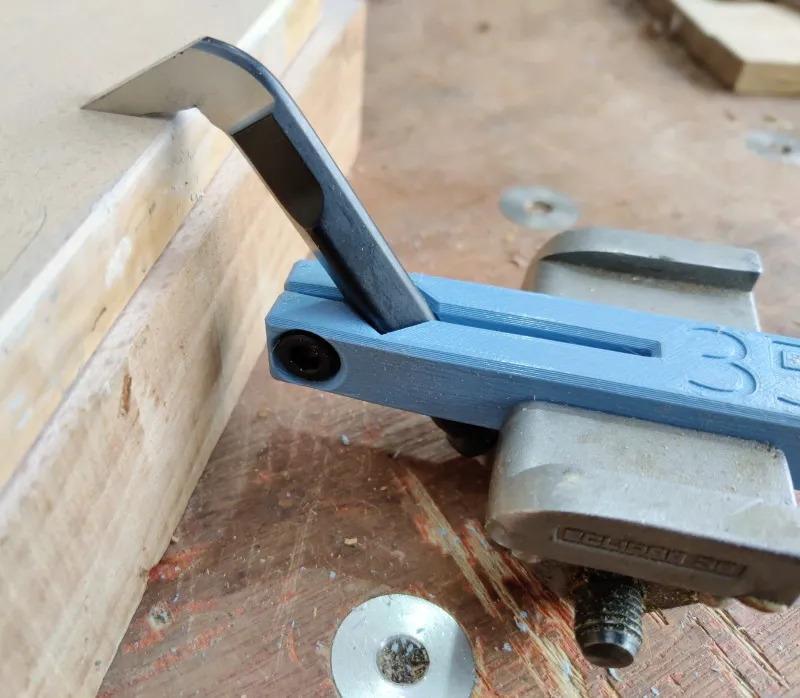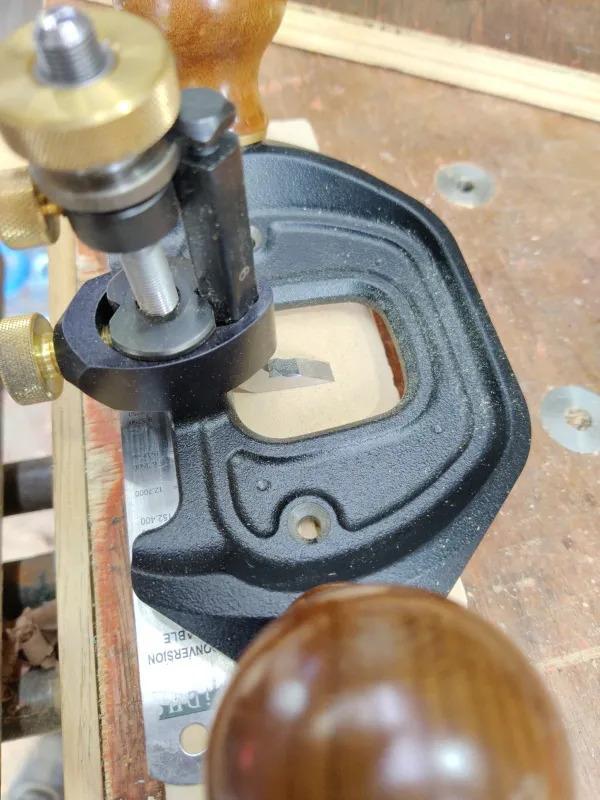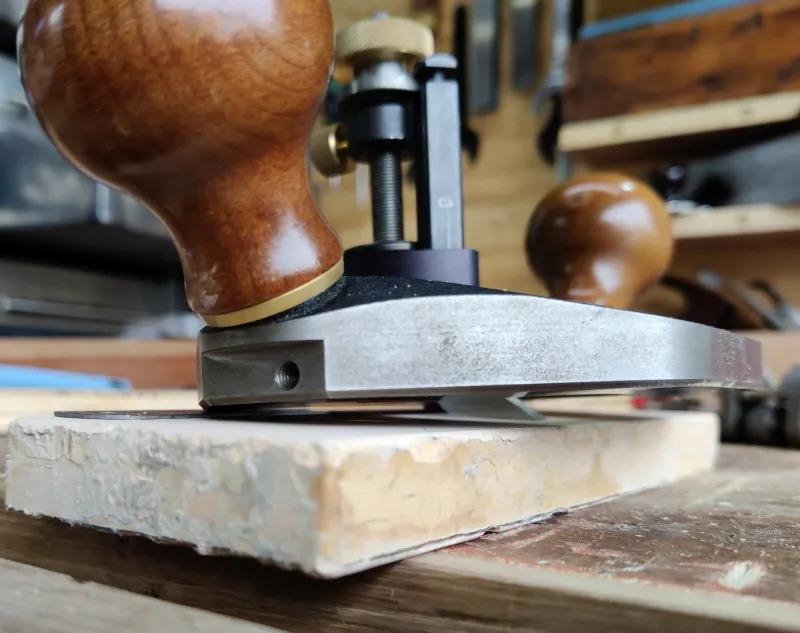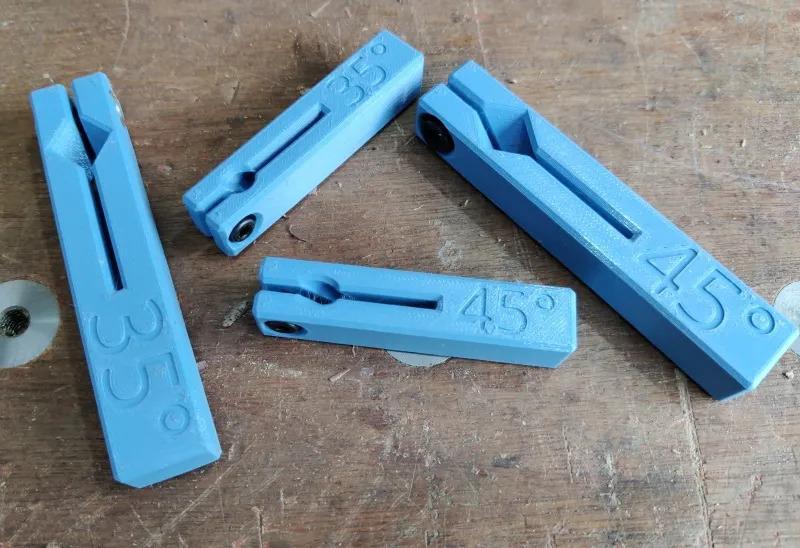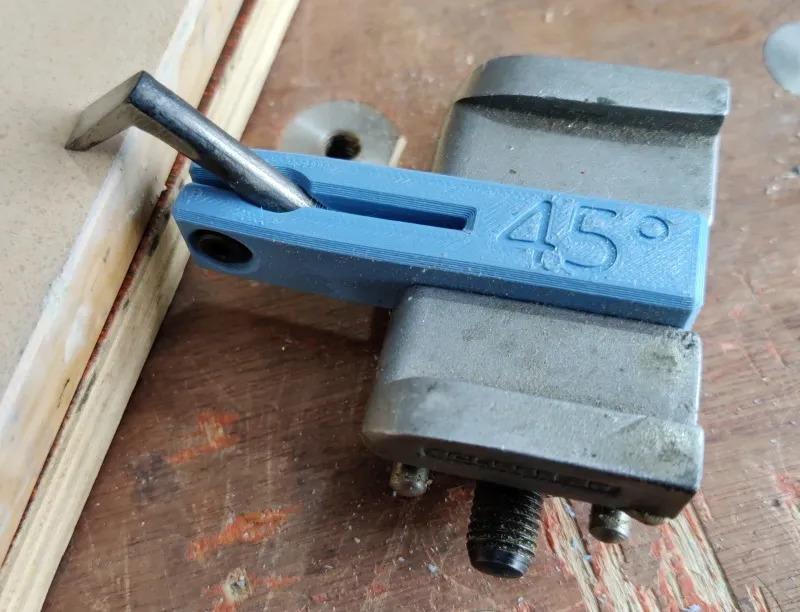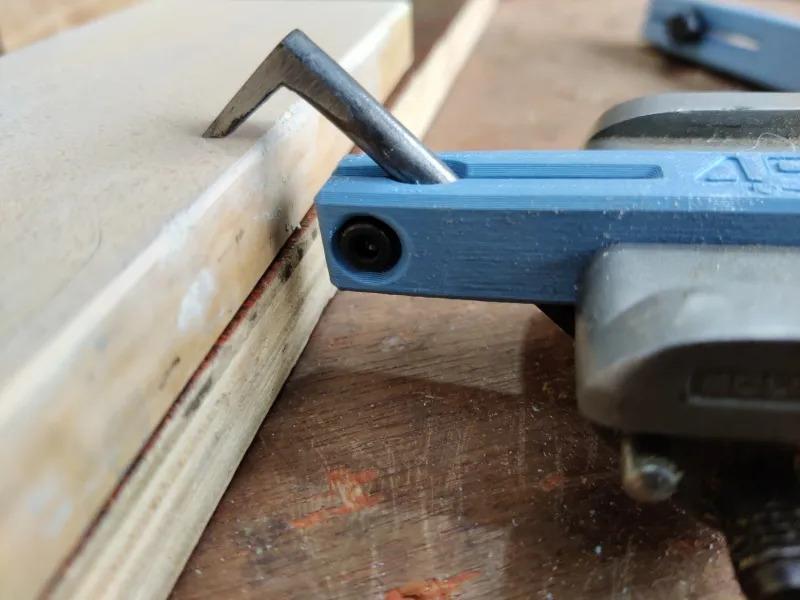Router Plane Blade Sharpening
This is a simple jig that makes sharpening router plane blades extremely quick and easy. It's 3D-printed but could easily be made out of wood if you don't have a 3D printer.
It's pretty much a direct copy of a wooden one that the late David Charlesworth shows in his excellent mortice and tenon joint video. As he demonstrates, using this jig makes the process of sharpening the upper face of the router blade quick and easy.
The jig gets held in a honing guide (I use the Eclipse 36 as you can see in the photos), the sharpening stone gets lifted off the bench on a block of wood or similar and then the honing guide can be moved back and forth along the bench to abrade the bevel.
For the underside of the router plane blade, I also use a Charlesworth method but this doesn't require any jigs:
The blade is fitted to the router plane and the blade adjusted until, when placed on a flat surface, the bottom of the blade is flat on that surface. I then place a steel rule on the edge of the sharpening stone (to protect the back corner of the router plane from being abraded) and place the router plane on the steel rule. Moving the router plane side-to-side abrades the underside of the blade and guarantees that the edge is parallel to the base of the router plane.
Assuming the blade was perfectly flat when the router plane was on a flat surface, the thickness of the steel rule results in a small micro-bevel to appear at the tip of the blade, thus speeding up the sharpening (not that it would take very long even without that height difference). David Charlesworth used a small piece of plastic in place of the steel rule; that would also work fine but I keep an old steel rule (one with inches as well as millimetres and hence not as nice to use as a metric-only one) with the sharpening stones for using the other Charlesworth method for preparing the backs of bevel-down plane blades, so the steel rule is convenient.
There are a few versions of the jigs for different nominal cutting angles (note that the cutting angle marked assumes that the blade/stone are set in the honing guide such that the jig top surface is level).
These photos show the version of the jig I made for my small Record 722 mini router plane.
You can get the 3D models for these jigs from printables.com.
This website is free and ad-free, but costs me money to run. If you'd like to support this site, please consider making a small donation or sending me a message to let me know what you liked or found useful.

